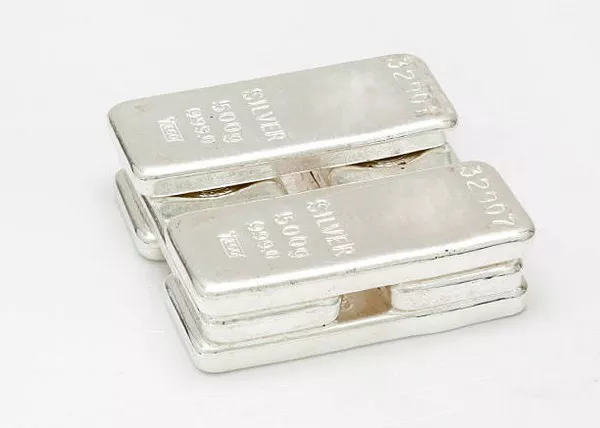Silverware, often passed down through generations as cherished heirlooms or acquired as valuable investments, holds a special place in many households. However, determining the authenticity of silverware can be a challenging task for individuals who are not well-versed in the nuances of this precious metal. This article aims to provide a comprehensive guide on how to tell if silverware is real, covering various aspects such as markings, physical properties, and testing methods.
Understanding Silver
Before delving into the methods of authenticating silverware, it is essential to have a basic understanding of silver itself. Silver is a highly malleable and ductile precious metal known for its brilliant luster and excellent electrical conductivity. It has been used for centuries to craft decorative and functional items, including cutlery, flatware, and jewelry.
The most common types of silver used in silverware are sterling silver and silver-plated metal. Sterling silver is a pure silver alloy, typically composed of 92.5% silver and 7.5% other metals, such as copper. Silver-plated items, on the other hand, are made of a base metal (often brass or copper) with a thin layer of silver applied to the surface.
Identifying Authentic Silverware
Hallmarks and Markings
One of the primary methods to identify real silverware is by examining the markings or hallmarks on the pieces. These markings often contain crucial information about the silver’s purity and origin. Here’s what to look for:
a. Sterling Silver Markings: Authentic sterling silverware pieces should bear a “925” or “92.5” hallmark, indicating the silver content of 92.5%. Additionally, you may find other marks such as “Sterling,” “925/1000,” or “925 Fine” on the items.
b. Maker’s Mark: Look for a maker’s mark or the manufacturer’s stamp, which can provide valuable information about the piece’s origin and authenticity. Silversmiths and manufacturers have distinct marks that can be traced back to specific time periods and regions.
c. Country of Origin: Some silverware may also bear marks indicating the country of origin, such as “925 Mexico” or “Sterling England.” These can help you determine the source of the piece.
d. Date Marks: In some cases, you may find date marks that indicate the year of manufacture. These marks vary between different countries and time periods.
Magnet Test
A simple but effective test to determine if silverware is real or not is the magnet test. Silver is not magnetic, so if a magnet attracts your silverware, it is likely silver-plated or made of another magnetic metal. Be cautious, though, as some silverware may have small magnetic components like knife blades or steel reinforcement in the handles.
Weight and Density
Silver is denser than most other metals commonly used for silver-plated items. Genuine silverware tends to feel heavier and denser in the hand compared to plated pieces made of lighter base metals. While this method is not foolproof, it can provide an initial indication of authenticity when used in combination with other tests.
Tarnish and Patina
Real silverware tends to tarnish over time, forming a characteristic patina or darkening of the surface. This tarnish can be removed with proper cleaning, but if a piece shows a deep, even patina, it suggests that it is made of authentic silver. Silver-plated items may also tarnish but typically show a different pattern, with the base metal becoming more apparent.
Testing for Authenticity
If you still have doubts about the authenticity of your silverware after conducting initial inspections, you may consider more advanced testing methods:
Acid Testing
Acid testing involves applying a small drop of acid to a discreet area of the silverware. The acid’s reaction with the metal can indicate its purity. For sterling silver, nitric acid is commonly used. If the metal turns a creamy color, it is likely sterling silver. Be cautious when using this method, as it can damage the piece and should only be done by professionals.
X-ray Fluorescence (XRF)
XRF is a non-destructive technique that can accurately determine the composition of an object. Portable XRF devices are available for testing silverware without causing harm to the pieces. This method is commonly used by appraisers and collectors to verify the authenticity of silver items.
Ice Test
The ice test is a quick, non-invasive way to assess the thermal conductivity of silverware. Genuine silver has excellent thermal conductivity, so when you place an ice cube on a silver item, it should melt rapidly. If the ice cube melts slowly or doesn’t melt at all, it may indicate that the item is not real silver.
Professional Appraisal
If you are uncertain about the authenticity of your silverware or suspect that it might have significant historical or monetary value, it’s advisable to seek a professional appraisal from a certified appraiser or a reputable antique dealer. These experts have the knowledge and equipment to accurately assess the authenticity and value of your silver items.
Conclusion
Determining the authenticity of silverware is essential for collectors, investors, and those who cherish family heirlooms. By examining hallmarks, conducting simple tests, and, if necessary, using more advanced methods like acid testing or XRF, you can confidently identify real silverware. Always exercise caution when conducting tests and, when in doubt, consult a professional appraiser to ensure the accuracy of your assessment. With the right knowledge and tools, you can appreciate the beauty and value of genuine silverware in your collection.


